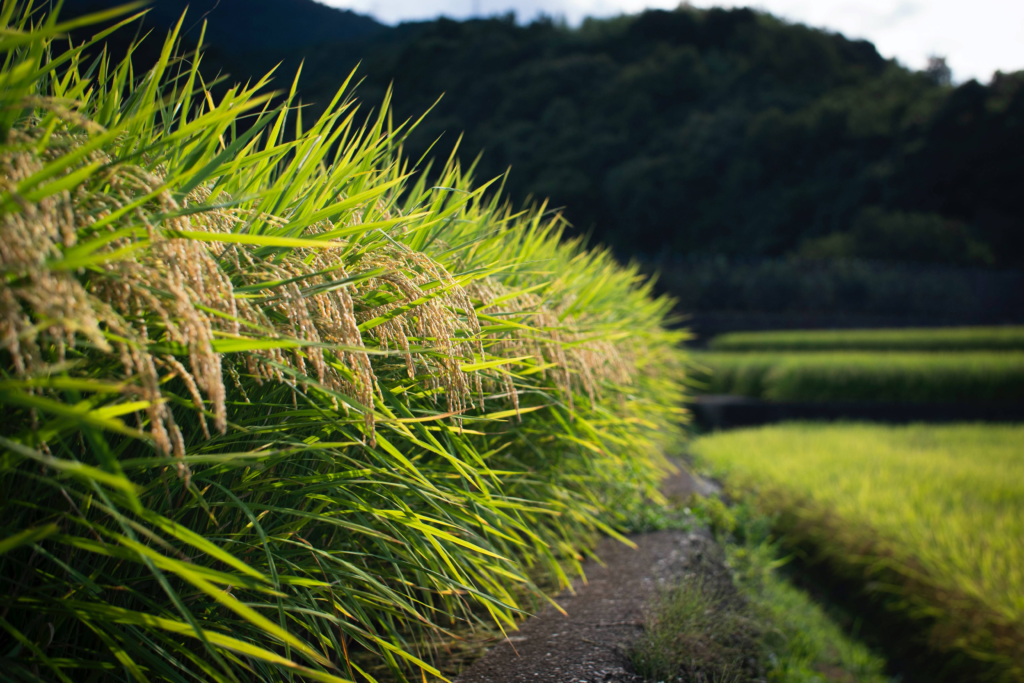Tags
Rice variety selection: Inbred or hybrid – What’s the best option?

Rice is a staple food in the Philippines, making its sustainable cultivation essential for ensuring food security in the nation. There are two primary types of rice that are commonly cultivated: inbred rice and hybrid rice. Each type possesses its own set of advantages and disadvantages, and understanding these differences is important for farmers to make informed decisions about which type is best suited for their specific farm conditions.
What is inbred rice?
Inbred rice, also referred to as traditional or open-pollinated rice, is a type of rice variety that results from self-pollination or mating between closely related individuals. These varieties have been cultivated for generations, leading them to exhibit specific traits that are well-adapted to local environments.
Advantages of inbred rice
Inbred rice varieties offer several advantages that make them attractive to many farmers in the Philippines. One significant advantage is their adaptability. Inbred rice varieties are known for their ability to thrive in specific local conditions, making them reliable choices for farmers in those areas. Additionally, inbred rice allows farmers to save seeds from their crops for the next planting season. This seed-saving practice not only reduces seed costs but also helps preserve traditional knowledge passed down through generations. Moreover, many inbred rice varieties demonstrate good resistance to local pests and diseases, which enhances their resilience against environmental pressures and reduces the need for excessive pesticide use.
Disadvantages of inbred rice
Despite their advantages, inbred rice varieties also have certain drawbacks that need to be considered. One major concern is genetic erosion. Continuous cultivation of inbred rice can lead to a decrease in genetic diversity within the crops. This reduced genetic diversity may make the crops more vulnerable to new pests or diseases, posing a risk to long-term food security. Another disadvantage of inbred rice is its lower yield potential compared to hybrid varieties. While inbred rice can be dependable under specific conditions, it may not match the yield levels achieved by hybrid rice. Furthermore, some inbred rice varieties may lack certain desirable traits found in hybrid varieties, such as improved grain quality or enhanced tolerance to extreme weather conditions.
What is hybrid rice?
Hybrid rice, on the other hand, is the result of crossbreeding two different inbred rice lines to produce a new variety with specific traits. This method harnesses the phenomenon of hybrid vigor, which often leads to higher yields and improved performance in the resulting rice plants.
Advantages of hybrid rice
Hybrid rice presents several advantages that have made it increasingly popular among farmers. One of the most significant advantages is its increased yield potential. Hybrid rice varieties have demonstrated significantly higher yields compared to traditional inbred varieties, contributing to higher overall production levels. Additionally, hybrid rice plants tend to exhibit greater uniformity in growth, maturity, and grain quality. This uniformity makes them easier to manage during cultivation and harvesting. Another prominent advantage of hybrid rice is the phenomenon of hybrid vigor. This process leads to stronger and more resilient plants, enhancing their ability to withstand environmental stresses, diseases, and pest attacks.
Disadvantages of hybrid rice
While hybrid rice offers impressive benefits, it also comes with certain disadvantages that need careful consideration. One prominent drawback is the higher seed costs associated with hybrid rice cultivation. Unlike inbred rice, which allows farmers to save seeds from their crops, hybrid rice seeds need to be purchased anew every planting season. This can significantly increase production expenses for farmers, especially those with limited financial resources. Another concern is the potential dependency on seed companies. Farmers relying on hybrid seeds may become reliant on specific seed providers, impacting their autonomy in seed selection and farming practices. Moreover, hybrid rice may require specific growing conditions and inputs to achieve optimal yields. This may not be suitable for all farm types, and farmers must carefully assess whether their resources and capabilities align with the requirements of hybrid rice cultivation.
Other factors to consider when choosing between inbred or hybrid rice
Farm size plays a critical role in determining the suitability of each rice type. Larger farms may be better equipped to reap the benefits of hybrid rice’s higher yields, as increased production can lead to better economies of scale. In contrast, smaller farms might find inbred rice more cost-effective, as it allows for seed-saving and requires fewer inputs.
Resource availability is another significant factor. Farms with limited access to water, fertilizers, and pesticides may find inbred rice more suitable, as it generally exhibits good resistance to local pests and diseases. On the other hand, farms with ample resources and the ability to provide the necessary inputs may opt for hybrid rice to maximize their yield potential.
Market demand also plays a crucial role in decision-making. Farmers should consider the preferences of consumers and market trends when choosing between inbred and hybrid rice. The type of rice preferred by consumers can significantly impact the marketability and profitability of the farmers’ produce.
Both inbred and hybrid rice have their merits and drawbacks, and there is no one-size-fits-all answer to which type is superior. The choice between inbred and hybrid rice should be based on a thorough understanding of their respective advantages, disadvantages, and suitability for different farm conditions. Filipino farmers must carefully evaluate their farm size, resource availability, and market demands to make the best decision for sustainable rice production and food security in the nation.
https://mb.com.ph/2023/8/14/rice-variety-selection-inbred-or-hybrid-what-s-the-best-optionPublished Date: August 14, 2023





